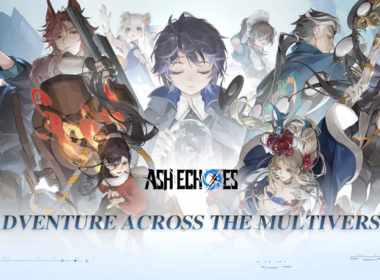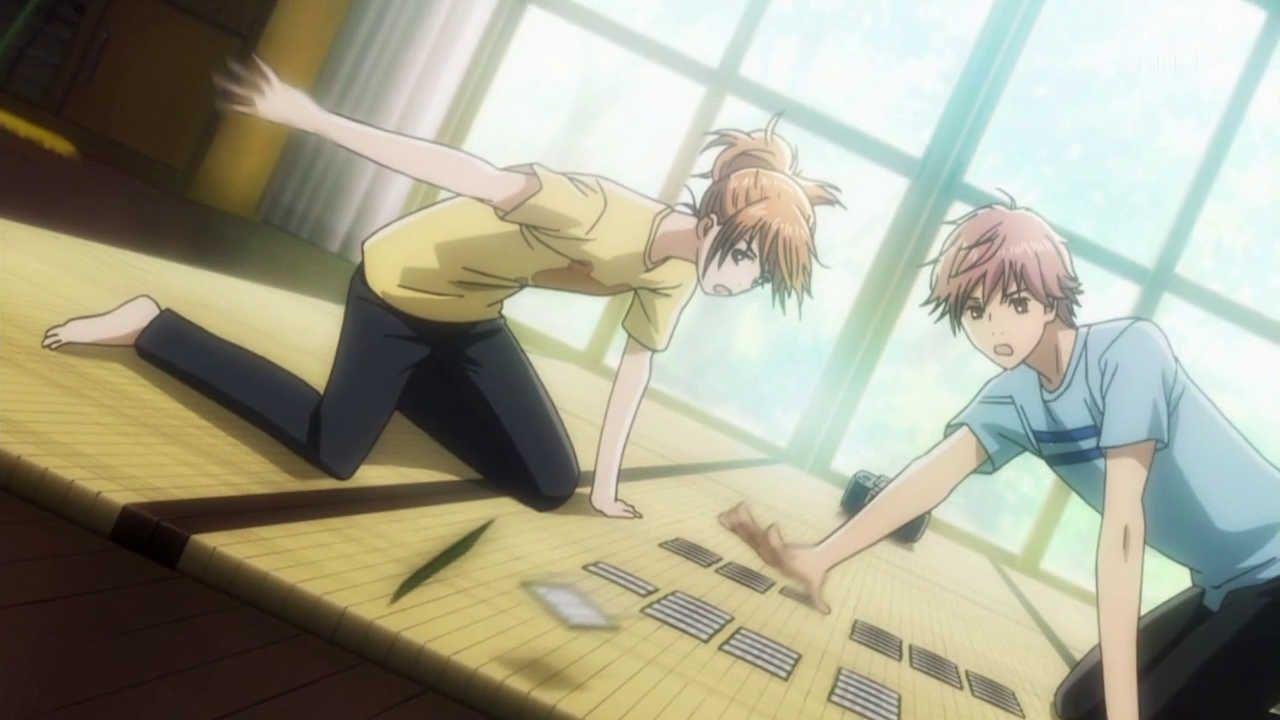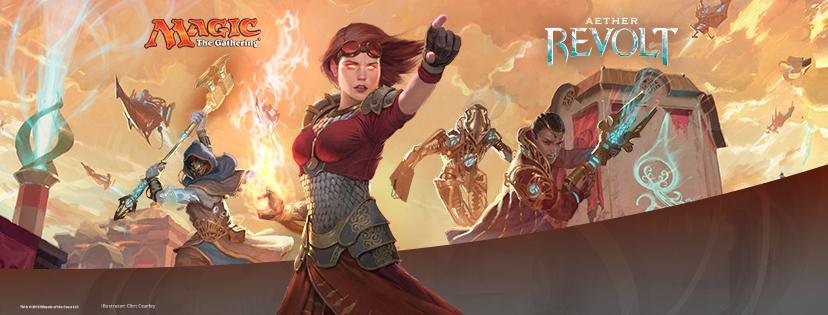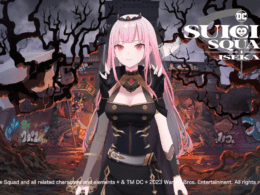Introduction
Always wanted to find a good shoujo series that is not too clichéd, but still with wonderful shoujo elements that we all love? Look no further because here comes one of the best shoujo-manga-adapted anime of the decade!
Storyline/Plot/Characterization
Chihayafuru is technically a sports anime. But unlike the common animes of the same genre (Free, Haikyuu!! etc.), this anime/manga focuses on a card game. Yes, a card game. Karuta is considered a sport in Japan, and in Chihayafuru, we take a deep look into the world of competitive karuta.
Most of us have probably never heard of karuta before, as it is a traditional Japanese game that is not widely promoted as part of the Japanese culture craze. It involves memorization of the Hyakunin Isshu, an anthology of one hundred poems. A reader reads out a randomly selected poem, and the player has to find the corresponding lower phrase of said poem.
I know, it sounds boring, and it’s probably no wonder why the game isn’t popular at all. Having said that, the mangaka strived to make karuta seem attractive to the general public by focusing on the aggressive-played competitive karuta, dramatizing the games and competitions, and… it’s working.
Chihayafuru is now one of the most popular shoujo manga ever, with a good focus on the main subject at hand: karuta. (No, it’s not just about the romance). The subject matter is so special and intriguing that even someone who is hiragana-illiterate would enjoy the show.

Chihayafuru revolves around Chihaya, a spunky, hot-headed girl who became immersed in the world of karuta after being introduced to it by a transfer student in her class, Arata. Together with their childhood friend Taichi, they formed a temporary karuta team that lasted all too short. A shoujo manga with two guys and one special girl? We don’t need to keep watching to know where this is going.
The premise of the love triangle is pretty straightforward, but the developments of their relationships are so deeply infused into their karuta journeys, and this aspect alone has made fans begging for a season 3 (which unfortunately is yet to come). I’m a proud shipper of Chihaya with Arata, but as the series progresses, the mangaka has skilfully made me feel for Taichi as well.
The overall plot of the series is well paced, with good twists here and there. I enjoyed Arata’s progress of rediscovering his purpose of playing karuta after he decided to quit, as well as Taichi’s journey of finding confidence in the one thing he can’t seem to be good at.
Everyone has their own special “moment” dedicated to them in different parts of the story, even the other team members and other rival players. The mangaka does not neglect the feelings of even the most insignificant side character. Karuta is important to everyone, and the mangaka made sure to let us understand that.
Chihaya strives to reach the top: to be Queen of karuta. As karuta is a traditional Japanese game, being number one in Japan would mean being the best in the world. Chihaya has wild dreams for someone who still plays with many flaws, but her sheer determination and swift reflexes has seen her winning cards from the best female player in the country – the current Queen, Wakamiya Shinobu. The tension between the two doesn’t just end on the tatami mats though – Shinobu has some sort of history with Arata. Cue the drumrolls as the love triangle becomes a square.
As the main character of the series, Chihaya is beyond likeable. I don’t say this much about other female characters, but Chihaya has none of the whiny nonsense and annoying helplessness that we have seen all too often. Even though her beauty has been mentioned several times throughout the series (being the sister of a famous model), Chihaya’s attention doesn’t go into her appearance at all. As a headstrong, determined character, she comes across as unpretentious in her troubles and concerns. The two male leads are equally well created. Shy Arata who becomes another person on the karuta mats versus all-rounder Taichi who does everything for the one girl he likes. It really is impossible to pick a favourite.
The series explores themes such as coming-of-age, discovering one’s identity, finding purpose in life, friendship, comradery, solitude and achieving dreams. There is so much youthful hot-bloodedness involved that it makes us feel like we could do anything we wanted.
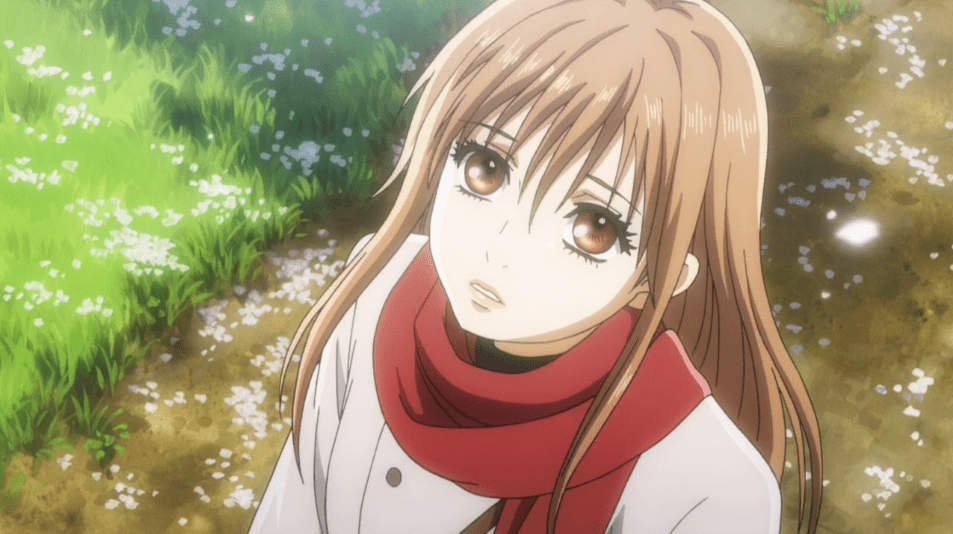
Art and Animation
The art is typically shoujo-styled in the manga, but I love the bright colours of the anime and even the falling sakura petals that background the characters’ entrances far too often. The characters’ designs are rather true to their personalities: chubby nikuman-kun (Meat Bun Guy) is always eating a meat bun and tsukue-kun (Desk-kun) with thick glasses is the nerd of the school. I enjoyed watching the anime more than reading the manga simply because you could see the entire karuta play in motion – how fingers swept across the tatami mats towards the cards, how the cards moved and flew, and how characters reacted to every turn of events.
Sound and Music
A huge factor that contributed to the tension of every match, the sound effects carried the story along gracefully. I was not a big fan of the opening songs (they were rather ‘meh’ in my opinion), but the ending songs really resonated with me. The ending songs in both seasons are sung by Asami Seto, Chihaya’s voice actress, so it felt as though it was a message from Chihaya herself.
Overall
Chihayafuru is indeed a beautifully written/drawn manga and anime that steers away from the typical “he loves me, he loves me not” woe that is all too rampant in shoujo stories these days. The plot never loses its central ideas, and Chihaya doesn’t take a long-ass time to figure out her feelings either. If you’ve just finished this series, then it’s high time to invest in a pack of karuta cards and get down to memorizing the Hyakunin Isshu, because this series is so good that it’ll make you want to get involved in competitive karuta.




